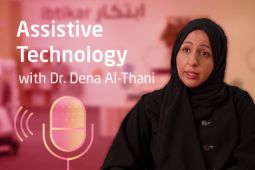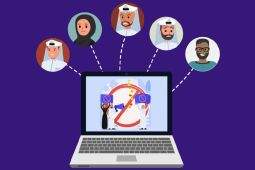What should I know about my freedom of speech on the internet?
My Children and Digital Inclusion

What is digital inclusion?
Digital inclusion is a relatively new concept that attempts to address issues related to digital literacy and access to information and communication technology. Digital inclusion is the ability of individuals and groups including the most vulnerable and underprivileged to access and use the information and communications technologies such as software, websites, applications, and other related examples. Digital inclusion is a framework for assessing and considering the readiness of communities to provide access to opportunities in a digital age.
Digital inclusion has multiple sides such as the below:
- Availability, affordability, and public access
- Digital literacy and consumer safety
- Economic and workforce development, education, health care, public safety, civic engagement, and social connections
Why it is important that my child becomes digitally included?
Digitalization creates jobs both directly, for example, new jobs like data analysts, social media marketers, or Internet of Things architects, and indirectly by raising productivity, lowering prices, and thereby stimulating demand. We need to work on the transition as parents since you are the primary influencer on your children and adolescents.
If we do not change the way we teach, 30 years from now, we’re going to be in trouble. “The knowledge-based approach of 200 years ago would fail our kids, who would never be able to compete with machines,” says Jack Ma of Alibaba Group.
How can I help my child be digitally included?
Your parenting or teaching should focus on equipping young people with the knowledge, skills, and attitudes needed for the new emerging opportunities in life and work. For this to succeed, the notion of parenting needs to be expanded beyond technical know-how or science to include skills such as complex problem solving, digital identity & citizenship, critical and creative thinking, social skills, and, not least, a strong ability to continue learning and self-develop in all areas.
While adapting yourself about this new information and ways, here some practical strategies and tips for you to use:
- Build a family agreement with them on enhancing digital skills, identity, literacy, security, emotional intelligence. To kick-start the conversation explain to them the definitions and why you’re doing this with them, and how it could benefit them in the present and future.
- Participate with them on how to create and manage their identity online. It could be on social media or other platforms such as gaming profiles. You should explain to them that their offline and online identities have the same approach by keeping integrity, you can give a couple of examples on how you do it yourself and the short- and long-term effects of digital identity.
- Explain to them the term privacy when they share certain information such as life experience, or emotions, and other personal experiences and how to stand up and face hurtful comments that your child could face.
- Teach them how to properly navigate the internet, how to choose quality content, how to search for information, how to think critically, and be able to distinguish fake news from reality, and how to make smart choices.
- Teach them empathy in the virtual world. It’s often too easy to forget that there are real people using these virtual profiles. Thus, the ability to build healthy relationships with others online is an important skill.
- Talk to them about digital security such as creating passwords for them and memorize it and not disseminating it to anyone. Avoiding any certain breach if they have received any suspicious messages asking for their security question answers or other sensitive information. Just as we would help them select a movie or a book, the same rules apply here. Encourage them to be critical and question everything they encounter.
- Explain to them about cyberbullying, how it happens, and how to stand up in these kinds of situations.
- Teach how to use this digital world in a healthy way on several aspects in acquiring information for education, future career, discovering new worlds, connecting to the world, making friends, checking new majors for university, and many other important aspects that they use.
The thought of preparing children for the digital world may be intimidating. However, with a few simple steps taken at home, it is possible to empower your children to become active and responsible from the very start. First and foremost, guide children to make smart choices when interacting with digital content. Just as you would not talk to strangers on the street, tell them to avoid interacting with strangers online.
@2x.png)


















